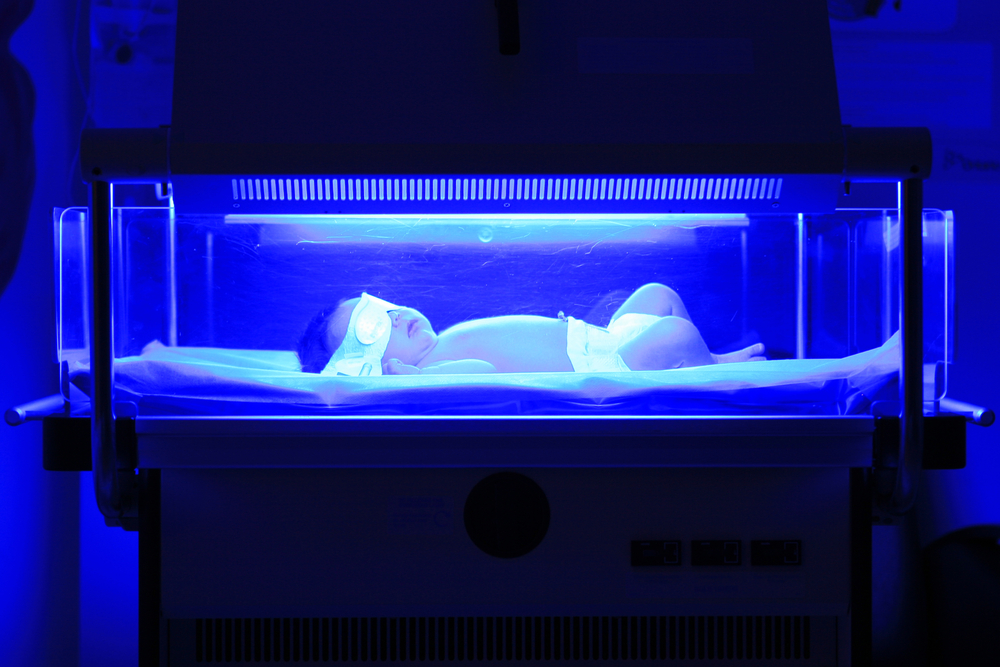
how to take care of jaundice in your newborn
18 May 2022 | 3 min Read
Tinystep
Author | 2574 Articles
Neonatal jaundice is common among newborns. Infants have a greater turnover of red blood cells (RBC) as compared to the adults. As a result, there is a greater production of bilirubin in infants. Unfortunately, the bilirubin produced remains the bloodstream, as the liver of a newborn is not matured enough to get rid of it. Thus, a high concentration of bilirubin builds up in the blood (Hyperbilirubinemia), resulting in neonatal jaundice. It is also known as physiological or normal jaundice.
Types of neonatal jaundice
In addition to physiological jaundice, infant jaundice can also be of the following types.
1. Jaundice of prematurity
A premature birth where the organs, including liver, are not matured enough to excrete the bilirubin.
2. Breastfeeding jaundice
The infant is not able to get enough breast milk.
3. Jaundice due to blood group incompatibility
Here, both the mother and baby do not have the same blood group. There may arise a situation where the baby’s RBCs get destroyed by the antibodies produced by the mother’s body. The result, as expected, is an elevated bilirubin level in the baby’s bloodstream.
4. Breast milk jaundice
A rare type of jaundice that affects breastfed infants.
Hyperbilirubinemia is the most common cause of neonatal jaundice. However, infantile jaundice can also be an outcome of the following.
1. Liver malfunction
2. Bacterial or viral infections
3. Haemorrhage or internal bleeding
4. Increased breakdown of the red blood cells of the baby (due to some abnormalities)5. Sepsis (infection in the blood of the baby)
5. Sepsis (infection in the blood of the baby)
As a precautionary measure, all babies should get examined for jaundice (irrespective of the symptoms) before discharge.
Symptoms
Neonatal jaundice, like any other type of jaundice, is characterised by the skin and eyes appearing yellow. The face first appears yellow, followed by the chest, abdomen and legs. It usually develops between the second and the fourth day after birth.
In most cases, neonatal jaundice is a mild condition that disappears on its own (between two to three weeks). However, seek medical assistance if:
1. The skin turns an intense yellow colour
2. Jaundice develops immediately or within 24 hours of birth
3. The baby develops a high fever (over 100C)
4. Jaundice lasts longer than usual (more than three weeks)
5. The baby sleeps for long and cries frantically
6. The baby does not feed well
The severe cases (bilirubin level higher than 25mg), if left untreated, can get worse, resulting in cerebral palsy, brain damage, deafness or even death.
Diagnosis
Neonatal jaundice can be diagnosed by:
1. Carrying out a skin test using a transcutaneous bilirubinometer
2. A blood test of the baby’s blood sample
3. Physical examination
Treatment
Neonatal jaundice can be treated using:
1. Phototherapy (light therapy)
In this therapy, the light, which emits in a blue-green spectrum, is made to fall on the baby. The light modifies the bilirubin molecule (shape and structure), which then gets excreted in the stool and urine.
2. Exchange transfusion
This treatment is carried out in the case of severe jaundice. The baby’s blood is taken out in small quantities. The bilirubin and the antibodies (maternal) present in the blood are diluted. The blood is then transferred back into the baby.
3. Intravenous immunoglobulin
This is helpful in case of jaundice due to incompatible blood type of the mother and the baby. The immunoglobulin injected into the baby intravenously brings about a significant reduction in the level of the maternal antibodies.
A


Suggestions offered by doctors on BabyChakra are of advisory nature i.e., for educational and informational purposes only. Content posted on, created for, or compiled by BabyChakra is not intended or designed to replace your doctor's independent judgment about any symptom, condition, or the appropriateness or risks of a procedure or treatment for a given person.
